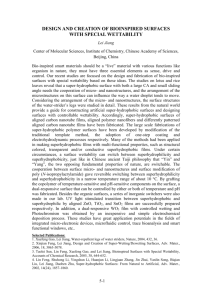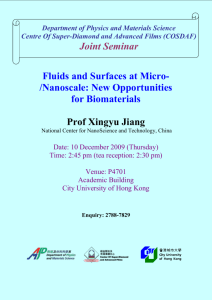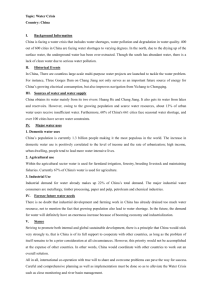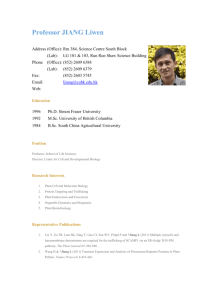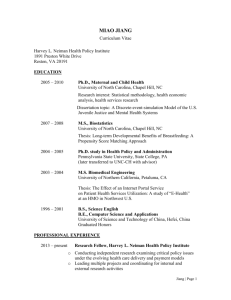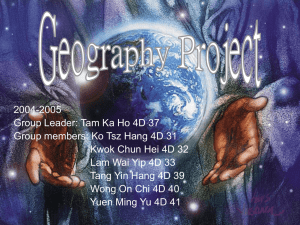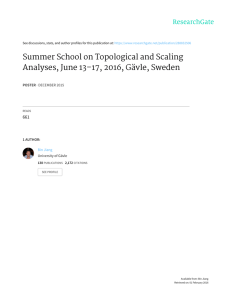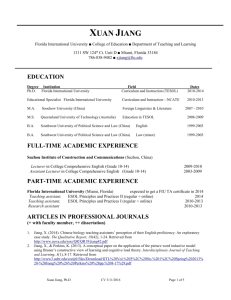Microporous Carbon from Biomass
advertisement
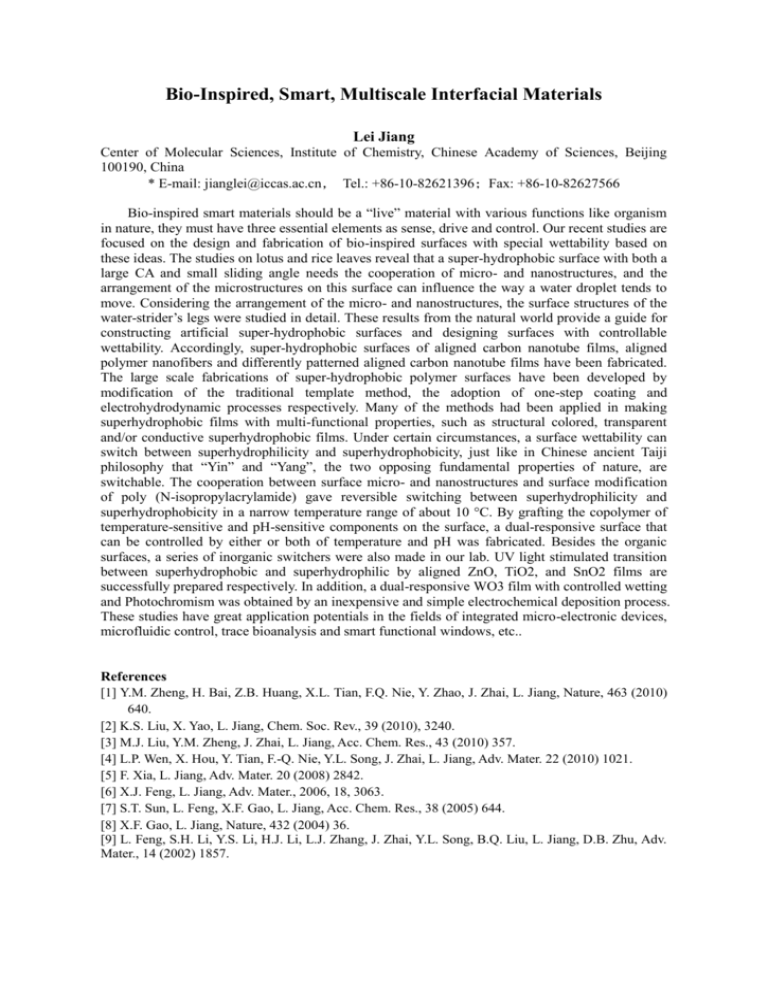
Bio-Inspired, Smart, Multiscale Interfacial Materials Lei Jiang Center of Molecular Sciences, Institute of Chemistry, Chinese Academy of Sciences, Beijing 100190, China * E-mail: jianglei@iccas.ac.cn, Tel.: +86-10-82621396;Fax: +86-10-82627566 Bio-inspired smart materials should be a “live” material with various functions like organism in nature, they must have three essential elements as sense, drive and control. Our recent studies are focused on the design and fabrication of bio-inspired surfaces with special wettability based on these ideas. The studies on lotus and rice leaves reveal that a super-hydrophobic surface with both a large CA and small sliding angle needs the cooperation of micro- and nanostructures, and the arrangement of the microstructures on this surface can influence the way a water droplet tends to move. Considering the arrangement of the micro- and nanostructures, the surface structures of the water-strider’s legs were studied in detail. These results from the natural world provide a guide for constructing artificial super-hydrophobic surfaces and designing surfaces with controllable wettability. Accordingly, super-hydrophobic surfaces of aligned carbon nanotube films, aligned polymer nanofibers and differently patterned aligned carbon nanotube films have been fabricated. The large scale fabrications of super-hydrophobic polymer surfaces have been developed by modification of the traditional template method, the adoption of one-step coating and electrohydrodynamic processes respectively. Many of the methods had been applied in making superhydrophobic films with multi-functional properties, such as structural colored, transparent and/or conductive superhydrophobic films. Under certain circumstances, a surface wettability can switch between superhydrophilicity and superhydrophobicity, just like in Chinese ancient Taiji philosophy that “Yin” and “Yang”, the two opposing fundamental properties of nature, are switchable. The cooperation between surface micro- and nanostructures and surface modification of poly (N-isopropylacrylamide) gave reversible switching between superhydrophilicity and superhydrophobicity in a narrow temperature range of about 10 °C. By grafting the copolymer of temperature-sensitive and pH-sensitive components on the surface, a dual-responsive surface that can be controlled by either or both of temperature and pH was fabricated. Besides the organic surfaces, a series of inorganic switchers were also made in our lab. UV light stimulated transition between superhydrophobic and superhydrophilic by aligned ZnO, TiO2, and SnO2 films are successfully prepared respectively. In addition, a dual-responsive WO3 film with controlled wetting and Photochromism was obtained by an inexpensive and simple electrochemical deposition process. These studies have great application potentials in the fields of integrated micro-electronic devices, microfluidic control, trace bioanalysis and smart functional windows, etc.. References [1] Y.M. Zheng, H. Bai, Z.B. Huang, X.L. Tian, F.Q. Nie, Y. Zhao, J. Zhai, L. Jiang, Nature, 463 (2010) 640. [2] K.S. Liu, X. Yao, L. Jiang, Chem. Soc. Rev., 39 (2010), 3240. [3] M.J. Liu, Y.M. Zheng, J. Zhai, L. Jiang, Acc. Chem. Res., 43 (2010) 357. [4] L.P. Wen, X. Hou, Y. Tian, F.-Q. Nie, Y.L. Song, J. Zhai, L. Jiang, Adv. Mater. 22 (2010) 1021. [5] F. Xia, L. Jiang, Adv. Mater. 20 (2008) 2842. [6] X.J. Feng, L. Jiang, Adv. Mater., 2006, 18, 3063. [7] S.T. Sun, L. Feng, X.F. Gao, L. Jiang, Acc. Chem. Res., 38 (2005) 644. [8] X.F. Gao, L. Jiang, Nature, 432 (2004) 36. [9] L. Feng, S.H. Li, Y.S. Li, H.J. Li, L.J. Zhang, J. Zhai, Y.L. Song, B.Q. Liu, L. Jiang, D.B. Zhu, Adv. Mater., 14 (2002) 1857.
